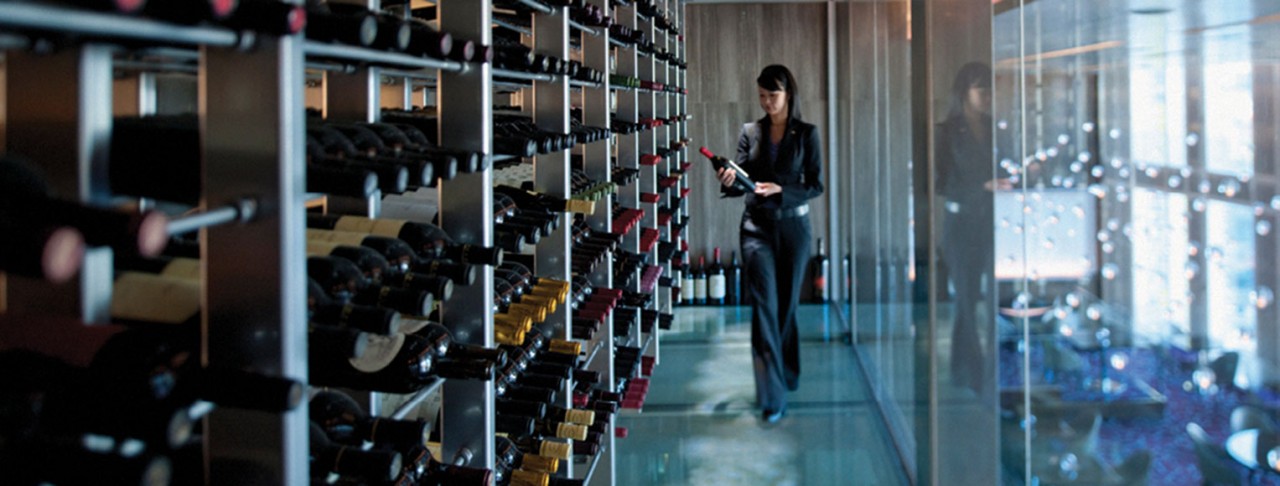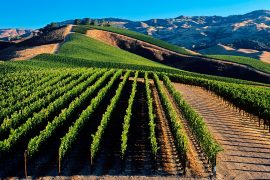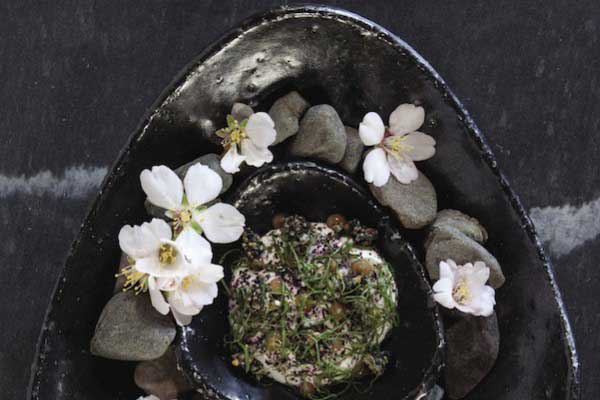
Open up the Twist wine list, a heady tome of 1,485 selections presented on sparkly golden paper, and you might notice a few pages that stand out on neon purple. Wine Director Will Costello has created a wine list within a list featuring 120 selections based on a specific vinification process: they’ve all been made through whole-cluster fermentation. Not only is Costello extremely passionate about the process, but it is a great opportunity for wine education in the dining room.
Whole-cluster fermentation refers to red wines that include the stems along with the grapes in the crushing and fermentation process. Before destemming equipment came along, all wine was made like this. Whole clusters create air space, stopping the grapes from crushing each other. This results in two types of fermentation: traditional with yeast and then carbonic maceration, where the fermentation starts inside the grape as it begins to rot in the presence of carbon dioxide.
Some people feel whole-cluster fermentation results in unrefined or rustic flavors. I like to say they create balance and complexity. You get more high tones. The stems themselves hold bitterness and phenolics or the ripeness tannins in most grapes. This adds non- traditional elements to the wine’s structure, not to mention yeast strains that grow naturally on the stems and other natural organisms that live in the vineyard, that strengthen that sense of place. I feel these wines tend to last a lot
longer and have more structure that holds up over time.
Many of these wines were already on my list, some with big names like Flowers 2011 Sonoma Coast Camp Meeting Ridge Block 11 Pinot Noir, a killer example of a whole- cluster pinot. But I have also made an effort in the last six months or so to really seek out small producers who are doing this as a standard. For example, I recently got my hands on six bottles out of only 28 cases made of a whole- cluster syrah called Apsara by Robin Akhurst. Twist is the only place in Nevada to have this, and so it makes my wine list pretty unique in that regard.
Not all grapes should be made whole cluster, but pinot noir and syrah are perfect for it. When you destem these grapes in particular, they tend to give you a lot more jammy, sappy fruit that needs to be balanced with oak. Whole-cluster syrahs and pinots on the other hand seem more fresh and enjoyable with food, not overripe in their style. Take a Saint Innocent pinot noir from the Willamette Valley. These are super bright, youthful, fresh wines, an exact expression of what Willamette Valley should be. A pinot should be tart red- fruit driven, puckering but still makes you want to take another sip, balanced with a small amount of new oak for that kiss of sweetness. Whole-cluster fermentation would not work with a merlot, for example, which is already green and herbal.
Adam Lee, winemaker and owner of Siduri, believes that if you pick up a glass, smell it, and can say, “This was made with whole-cluster grapes,” then you are doing something wrong. You are recognizing the winemaker’s stamp on the wine, not the expression of the site. In my opinion, whole-cluster wines should softly speak to aromatic floral notes, like rose petals and carnations, mixed with fresh herbs and maybe broken twigs mid-fall. It’s a great way to add texture to wines without having overly ripe fruit or oak.





